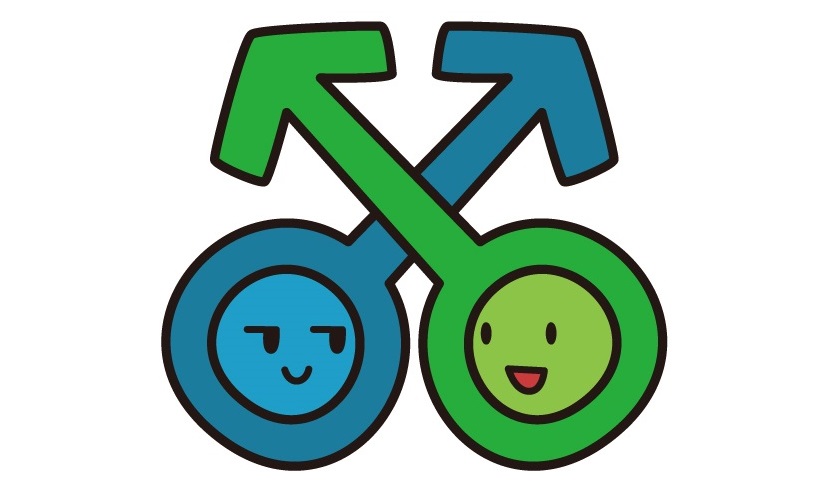2020.08.25
The Importance of Shipping in Boys’ Love Manga
Shipping: the most important element in the creation of boys’ love doujinshi. Let’s dive deep into the BL genre and see what “shipping” is all about.
What is Shipping?

The act of “shipping” two characters is turning them into a couple, even when they’re not a couple in canon. In Japanese, it’s known as “coupling”, and can be shortened to “CP” or “capu” on social media and in speech.
It’s a popular concept used not just in BL doujinshi but in all kinds of fan fiction and fan manga, and includes both gay and straight couples.
The type of shipping–and the nature of the relationship between the two characters–also determines how these fan works are categorized and distributed, especially in boys’ love stories.
The Basics of Shipping in Fan Works

Shipping in boys’ love doujinshi is typically between two characters and is labeled “Character A x Character B”. This describes the sexual relationship between the two characters so that fans know ahead of time what they will be reading.
For example, if a doujinshi is labeled “Character A x Character B”, that means that Character A is the “masculine” character (男性役, “danseiyaku”, the top) and Character B is the “feminine” character (女性役, “joseiyaku”, the bottom). When B is the danseiyaku character and A the joseiyaku, it would instead be labeled “Character B x Character A”, so the labeling is very important.
The danseiyaku can also be known as “the dominant” (攻, “seme” or タチ, “tachi”), “the left side” (左側, “hidarigawa”), or “the top”(上, “ue”). The joseiyaku is also referred to as “the submissive” (受け, “uke”, or ネコ, “neko”), “the right side” (右側, “migigawa”), or “the bottom”(下, “shita”). We’ll refer to the “top” as “seme” and the bottom as “uke” from now on.
Who is the “seme” and who is the “uke” is a very delicate matter in boys’ love manga, and many fujoshi, or fans of BL manga, have very specific tastes about how their favorite male characters should be shipped.
That’s why, if there is a mistake in the labeling that causes misinterpretation of the content, it can cause major trouble between the author and the fans. It’s happened many times before, so it’s really important to pay special attention to how you label your BL doujinshi.
For example, in one case, a particle doujinshi was distributed as Character A x Character B, but actually contained scenes in which Character B was the seme and Character A was the uke.
In justification of their work, the author said, “The essence of my manga is AxB and therefore should be distributed as such”. It seems that, in this doujinshi, Character A had the stronger, dominant personality, and B had the submissive one, so the author felt that an AxB classification was correct. However, because the sexual relationship depicted in the doujinshi showed B as the seme and A as the uke, they received a lot of criticism for that decision.
In this case, if the sex scenes had not depicted B as the seme and A as the uke, then it might have been accepted into the AxB genre.
But because they were, it should probably have been classified as BxA instead of AxB.
But in the end the labeling of different shippings is up to discretion of the author, so misunderstandings and misinterpretations on the part of the readers are common.
The best way to avoid trouble is to base your labelling on the sexual relationship within your doujinshi, since that is the generally accepted method.
Other Kinds of Shipping Labels

Shipping in boys’ love manga isn’t just limited to fixed relationships like Character A x Character B. There are all kinds of fujoshi out there who like all kinds of character couplings. Some enjoy any male-to-male character shipping; they’re known as “雑食派 (zasshoku-ha)”, or omnivores. Others have a preferred pair of characters, but don’t care who is the seme and who is the uke (リバ派, riba-ha, or reversibles). Some have just one character that they want to be the uke, and they don’t mind which characters ship with him (総受け派, sou’uke-ha, or general ukes).
Of course, with each of the different preferences come different labels as well. For example, in the case of reversible doujinshi, the popular label is Character A x Character B x Character A. This particular label indicates that the main shipping is with A as the seme and B as the uke, but also contains scenes that are reversed. If the core of the story was B as the seme and A as the uke, it would instead be B x A x B.
However, some more specific genres don’t have precise labels, so it’s often up to the discretion of the author on how they note the relationships in their stories. For example, a doujinshi about a love triangle where Character A and Character B are the seme and a third character C is the uke might be labeled as “Character A x Character C x Character B” or “Character A + Character B x Character C”, or even “A → C ← B”.
This is a problem that probably needs to be completely renovated within the entire BL genre.
The best plan for authors who want to avoid getting flack from readers for unclear or misinterpretable labeling is to post warnings ahead of time on social media, and to distribute their works together with clear disclaimers about the content.
If this article helps even one person avoid an unnecessary labeling complication, making their doujin life a little bit more comfortable, then this writer would be happy.
Do you understand the most important thing about shipping in boys’ love doujinshi now?
Though the rules about shippings can cause trouble on one hand, on the other hand, an accidental stumbling into an unexpected subgenre could also lead to a new fandom or anime crush.
Still, knowing a little bit about how shippings work in boys’ love doujinshi is one more step to having a happy doujin life.
Follow @doujinworld
Writer
Shuuuuhi
Translator
Dale Roll






